
Healthy, beautiful aquariums require good nitrate control
What is nitrate?
Nitrate is a chemical that naturally builds up in the aquarium over time. It can be harmful to fish if it is allowed to build up too high, and can lead to algae growth and other unsightly pests, but is not as harmful to fish as ammonia or nitrite.

Nitrate is a natural result of fish waste, but harmful in high concentrations
Where does nitrate come from?
Any type of organic waste that rots in the aquarium will eventually become nitrate. Beneficial bacteria in the aquarium breaks down organic waste into ammonia, then nitrite, and finally into nitrate. See An Introduction to Aquarium Cycling for an overview of cycling your aquarium.
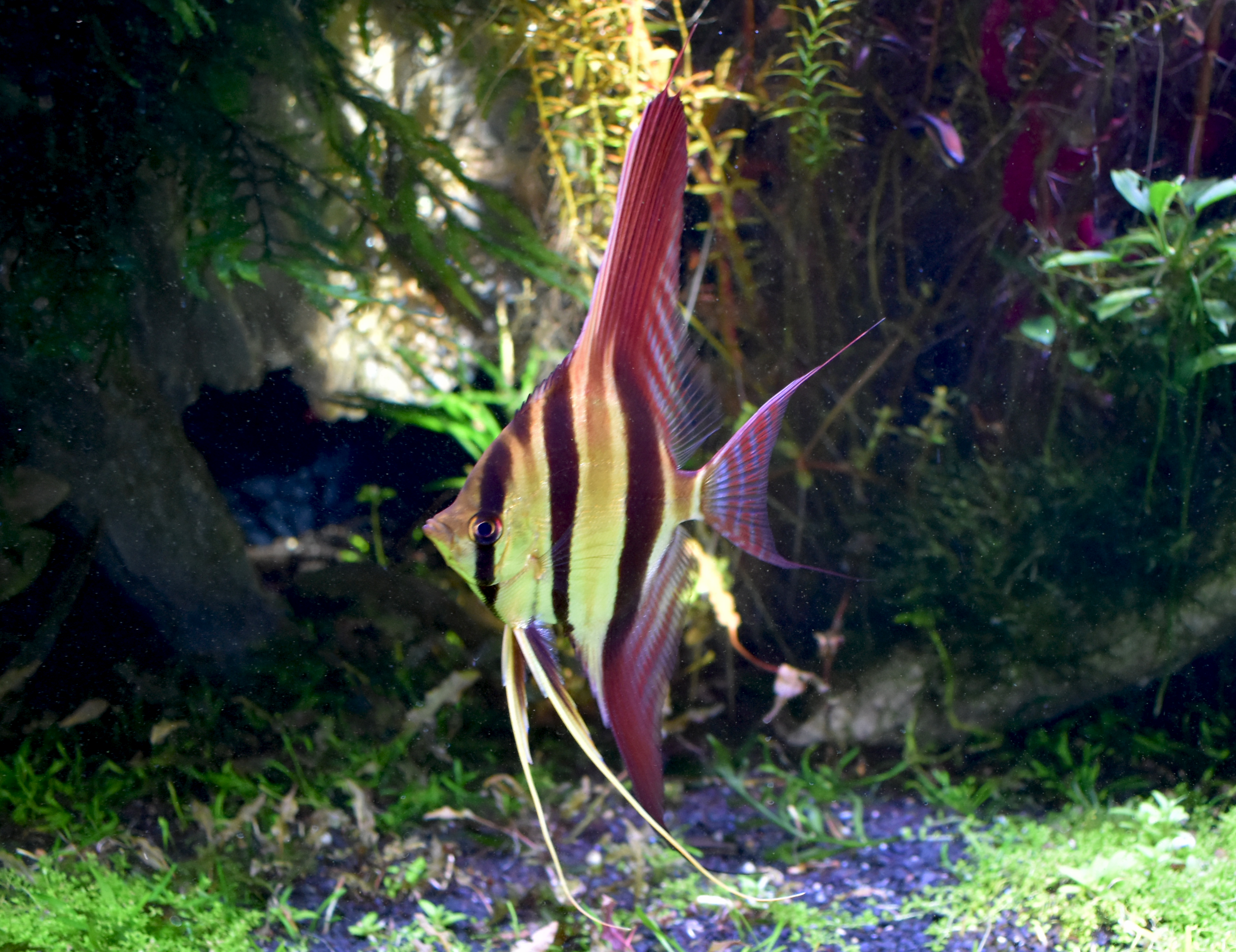
Some fish are much more sensitive to high nitrate levels
How much nitrate is too much nitrate?
This will vary from system to system. In many ways, keeping a healthy aquarium is all about replicating the natural habitat of the fish, and natural habitats have varying levels of nitrogenous waste. For example, saltwater tanks that contain corals should have nitrate levels as low as possible to mimic the near-zero nitrate levels of the ocean environment, while planted freshwater aquariums will tend to do poorly if their nitrate level falls to zero (since the plants use nitrate as a nutrient). As a general rule, nitrate levels should not be allowed to build up far above around 40 mg/L regardless of the system. Research your fish to know their level of nitrate sensitivity and plan your maintenance around meeting those standards.
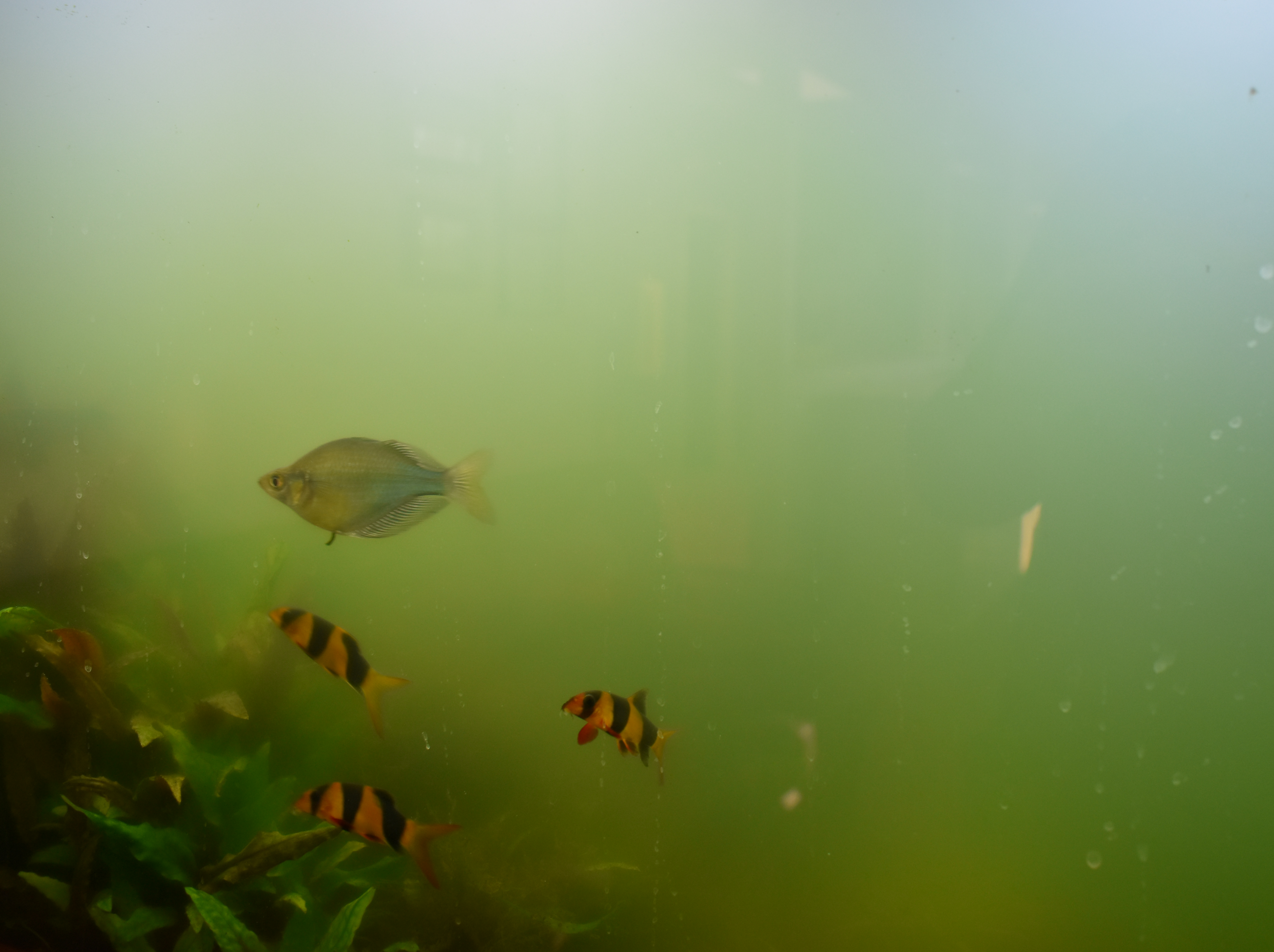
High nitrate levels can result in algae or green water
How do I prevent nitrate from building up?
Prevention is always the best solution to aquarium problems, and nitrate is no exception. There is no way to avoid nitrate production entirely. Any aquarium that contains a living organism is producing waste, and any waste (solid or liquid) that decomposes in the aquarium eventually becomes nitrate. However, there are several ways to limit or reduce nitrate production.
- Don’t overstock. Aquariums that are too small for the fish they contain will have higher concentrations of nitrate (because there is less water to dilute the nitrate). This is bad for the health of the fish and invertebrates of the system – your fish will be happier and healthier if they have an aquarium that is large enough for them.
- Don’t overfeed. While fish do best if they are fed a healthy and varied diet and should not be starved in the name of nitrate reduction, feeding so much that excess food accumulates on the bottom of the tank is not helpful to the fish and will result in high nitrate levels.
- Practice good substrate maintenance. Most aquariums have gravel or sand covering the bottom of the tank. This is beneficial because it houses good bacteria, and is necessary for keeping plants and certain bottom-feeders, but it can also trap leftover food or solid waste. Seachem® recommends to use a siphon to clean out about 1/3 of the substrate with every water change (once per week). This will prevent waste buildup in the substrate while avoiding the ammonia and nitrite spikes that can result from over-enthusiastic gravel cleaning.
- Use a waste-absorbing media. Medias like Purigen® and purfiltrum™ are designed to remove organic molecules before they can decompose into ammonia, nitrite, or nitrate. Using these types of media will result in water that is clearer and lower in nitrate as there is less organic waste being converted into nitrate.
- Use specialty filtration. Reef aquaria are often run with a specialized piece of equipment called a protein skimmer. This type of filter removes organics in much the same way that Purigen® will. Protein skimmers will work on freshwater systems as well, but these types of systems typically do not include a sump-style filter, which is required by most types of skimmers.
How do I reduce high nitrate levels?
The recommended method for reducing nitrate will vary according to the type of aquarium, and there are several different methods which will work for each type of aquarium.
Freshwater Fish-Only
Fish will almost always prefer water with lower nitrate levels over water with higher nitrate levels, but rapid shifts in water parameters will tend to be more stressful to the fish than helpful, even if the rapid shift is in a beneficial direction. As always, take care when making alterations to water parameters in the aquarium to ensure that the shift is not so rapid that it will stress the fish.
Method 1: Water changes
This is the simplest, most straightforward, and most common method of nitrate control in the aquarium. To carry out a water change, simply remove and discard some water from the aquarium, and refill with water that has a lower nitrate concentration (adding water conditioners, buffers, and supplements as needed to make the water safe for use in the aquarium - see Preparing water for Freshwater Tanks for an in-depth look at preparing water for your aquarium).
The effectiveness of water changes is a simple matter of math. If the nitrate concentration is 100 mg/L (ppm) and 30% of your tank is changed, the new nitrate concentration will be 70 mg/L. If 30% is changed again, the nitrate concentration will be 49 mg/L, a third time and the nitrate concentration will be 34.3 mg/L, and so forth. This means that it is inherently impossible to reduce the nitrate level to 0 through water changes alone unless the fish keeper does a 100% water change (which is never recommended, as it will be extremely stressful to the fish and potentially catastrophic to the beneficial bacteria colonies). It is also dependent on the availability of a low-nitrate water source.
Method 2: Beneficial Bacteria
Nitrate is produced by beneficial nitrifying bacteria, which take toxic ammonia and nitrite and convert it into nitrate. Nitrifying bacteria lives on surfaces in the aquarium that are sheltered from bright light and exposed to nutrient-rich oxygenated water (this is why filters are so important for housing beneficial bacteria). In fish keeping, healthy nitrifying bacteria colonies are key to a healthy aquarium, and so the maintenance of these bacteria colonies should be the fish keeper’s first priority.
However, there is another kind of bacteria that is capable of removing nitrate from the aquarium by converting it to nitrogen gas, which gasses off from the system. This type of bacteria is anaerobic, meaning it can only grow in environments where there is little to no oxygen, but where there is still enough water flow to deliver nutrients to the bacteria. A smart aquarist is likely trying to avoid deoxygenating their aquarium, so this type of bacteria growth is limited by the availability of suitable living space. In most tanks, it can only grow deep under the substrate and inside porous rock decorations, which is enough to slightly reduce nitrate production, but not enough to prevent a buildup entirely. To have a significant effect on nitrate, the fish keeper will need to intentionally include filter media that is capable of housing this type of bacteria.
Seachem® produces three types of filter media that are capable of housing anaerobic denitrifying bacteria: de*nitrate™, Matrix™, and Pond Matrix™. Each has a different specialty and intended application, so the choice between them will depend on your aquarium setup.
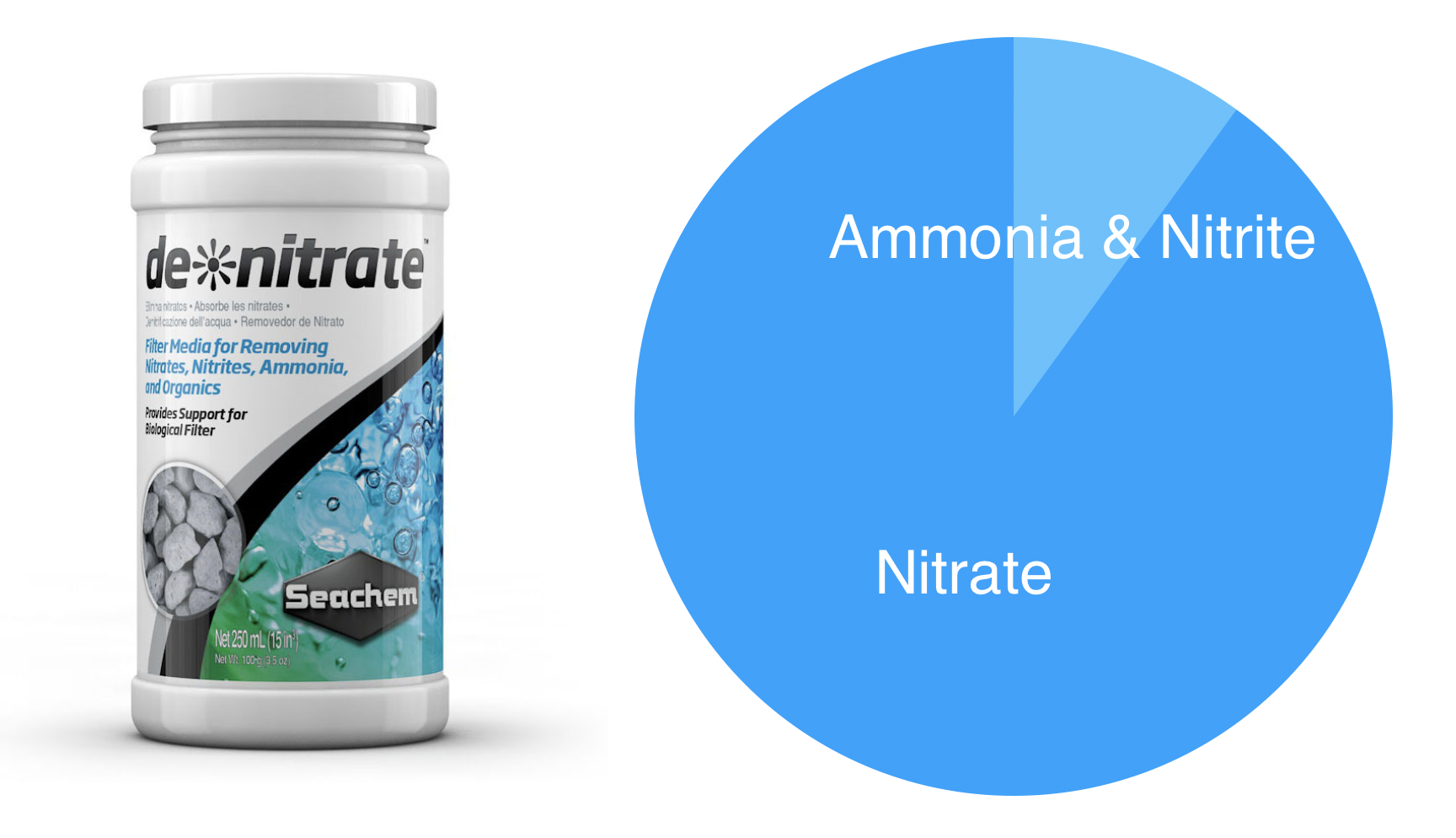
De*Nitrate™
This filter media is specifically designed to house anaerobic bacteria colonies. The small, porous particles pack together to provide massive surface area for anaerobic bacteria, making this the most effective of the Seachem® filter medias at reducing nitrate. The one caveat is that de*nitrate™ absolutely must be used at a flow rate of 50 GPH or less to effectively develop this type of bacteria. This is slower than most filters are capable of attaining, and Seachem® typically recommends using this media in a reactor instead. If the flow rate is allowed to reach above 50 GPH, de*nitrate will develop large colonies of aerobic bacteria instead. Incidentally, this makes de*nitrate an excellent bio-media for nano filters when the fish keeper’s primary concern is keeping ammonia and nitrite levels at 0.
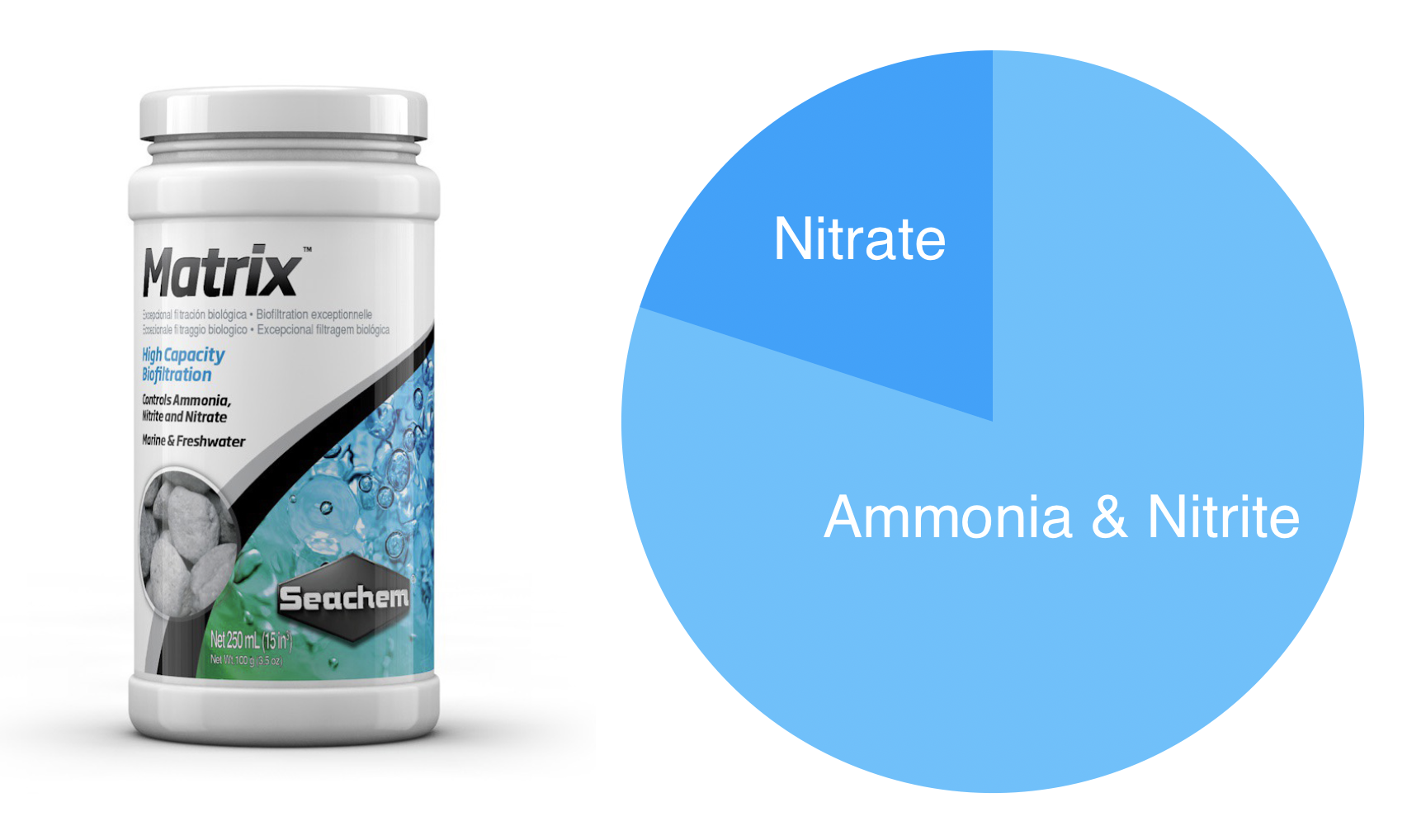
Matrix™
This filter media is designed to be an all-purpose biomedia for use in a variety of filer setups. The external surfaces of these particles develop the aerobic bacteria (which keeps ammonia and nitrite at 0) while the internal surface area of each particle develops the anaerobic bacteria that helps to reduce nitrate. This media works at any flow rate and can be used with any filter setup, but the nitrate removal effect of the media will be most dramatic if large volumes of media can be used (more media means more space for bacteria, which means more nitrate removal).

Pond Matrix™
This filter media has large particles, which makes it ideal for large filters where large volumes of filter media can be used. The large particles also mean that each individual piece of Pond Matrix™ has more internal surface area for anaerobic bacteria than each individual piece of Matrix™, making this media better at removing nitrate than Matrix™. However, a media with few large particles inherently has less external surface area than a media with many small particles, so while Pond Matrix™ is better at removing nitrate than Matrix™, the smaller external surface area means that more Pond Matrix™ must be used to have the same effect on ammonia and nitrite. This media will work in any filter and at any flow rate, but is most effective in large canister filters.
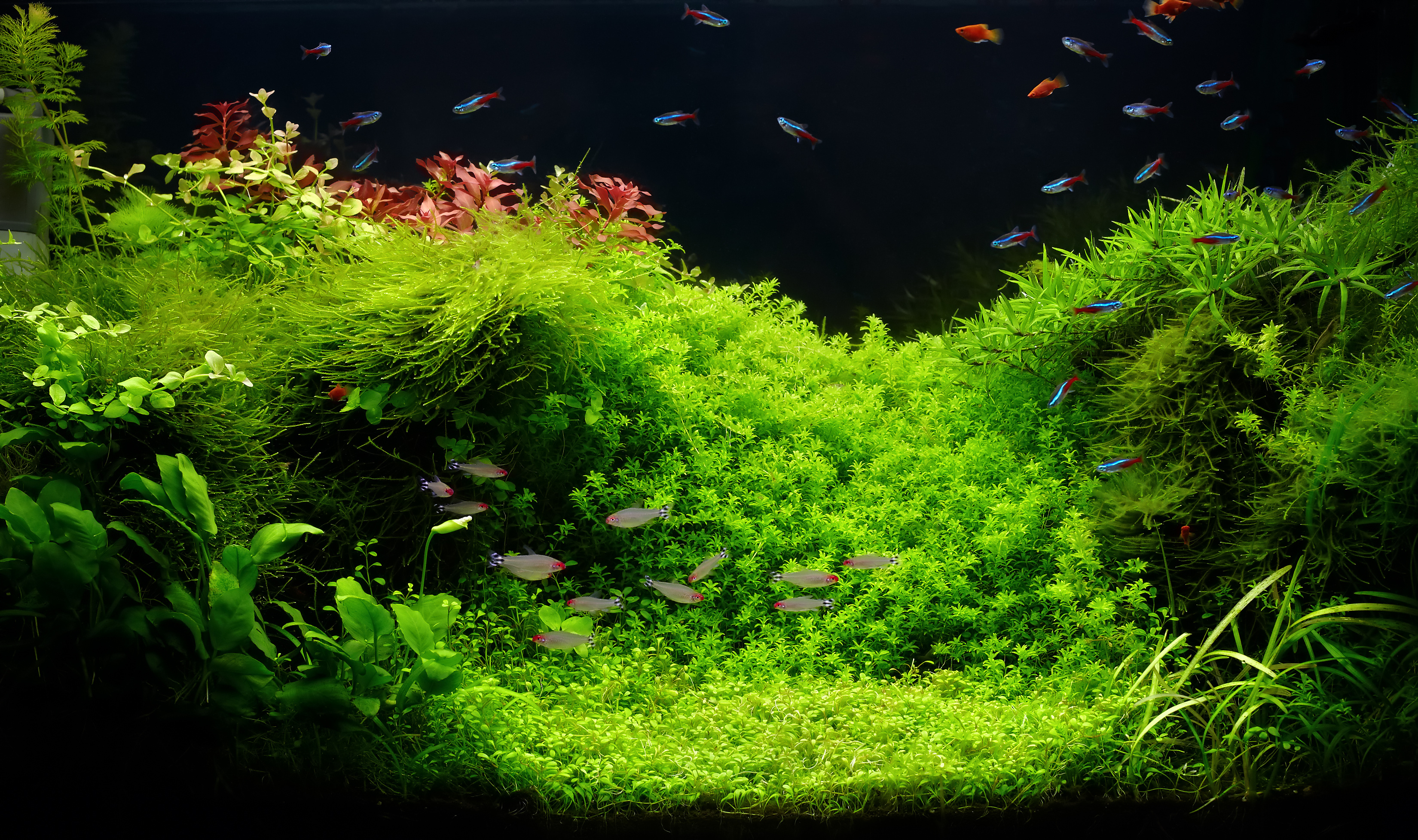
Freshwater Planted
Fish will almost always prefer water with lower nitrate levels over water with higher nitrate levels, but plants require nitrogen from nitrate in order to live. Determining the proper nitrate level for a planted aquarium requires careful research into the needs of the fish, but most keepers of planted aquariums maintain nitrate levels of around 10-20 mg/L. If nitrate levels rise too high, there are a few methods that the fish keeper can use to get these levels back into range.
Method 3: Utilization by plants
The first, and most important point to address here is that plants should not be used as a replacement for water changes or good aquarium maintenance. Keeping healthy live plants in an aquarium will typically necessitate more aquarium care rather than less, and allowing plants to fall into poor health will usually result in poor overall aquarium health. Plants will remove nitrate from the water, but in order to do so they will require a high-quality light source such as an LED light fixture, buffers and mineral supplements that are suited for plants (Acid Buffer™, Alkaline Buffer™, and Equilibrium™), a consistent source of bioavailable carbon (Flourish Excel™ or CO2 injection), and a wide spectrum of nutrients (Flourish® or aquavitro® supplements).
If an aquarium is planted but nitrate levels are still rising, the fish keeper can practice nitrate control by ensuring that the plants receive proper lighting and supplementation. Plants use nitrate to grow. If the plants are not using nitrate to grow and instead the nitrate is building up, the fish keeper should ask, “Why aren’t my plants using the nitrate? What do my plants need so that they can use the nitrate?” Aquarium plants use a lot of nitrate; in high-level aquaria, it is usually necessary to supplement more nitrate rather than remove nitrate from the system. If nitrate is building up, it means that the plants are not using it, typically because they are lacking an essential nutrient.
The major nutrients that the fish keeper needs to monitor in planted aquaria are nitrate, phosphate, potassium, and carbon. They should be present at the following levels:
Nitrate: 10-20 mg/L
Phosphate: 0.5-2.0 mg/L
Potassium: 8-15 mg/L (difficult to test – it is generally better to simply dose Potassium as a regular part of aquarium maintenance.
Carbon: 15-30 ppm CO2 (or regularly dose a liquid carbon supplement like Flourish Excel™)
See Article: Algae Control In the Planted Aquarium for further information about supplementation and nutrients for planted aquaria.
Method 1: Water changes
If it is determined that the cause of high nitrate in the planted aquarium is simply an excess of waste rather than a nutrient deficiency, then water changes will be the best method of nitrate removal. See Method 1: Water changes in the Freshwater Fish-Only section for an overview of water changes
Method 2: Beneficial Bacteria
While the methods of nitrate removal through the use of beneficial bacteria, which were described in the “Freshwater Fish Only” section, will still work in a planted system, they may work too well. As mentioned, plants need available nitrate in order to grow, and if the fish keeper reduces nitrate to 0, the plants may die. Healthy bio-filtration is just as important in planted tanks as in fish-only tanks, but it is generally not recommended to intentionally set up the filter to deplete the system of nitrate unless the fish keeper knows that they will intentionally be overstocking the system. See Method 2: Beneficial Bacteria in the Freshwater Fish-Only section for a more in-depth look at nitrate reduction through beneficial bacteria.
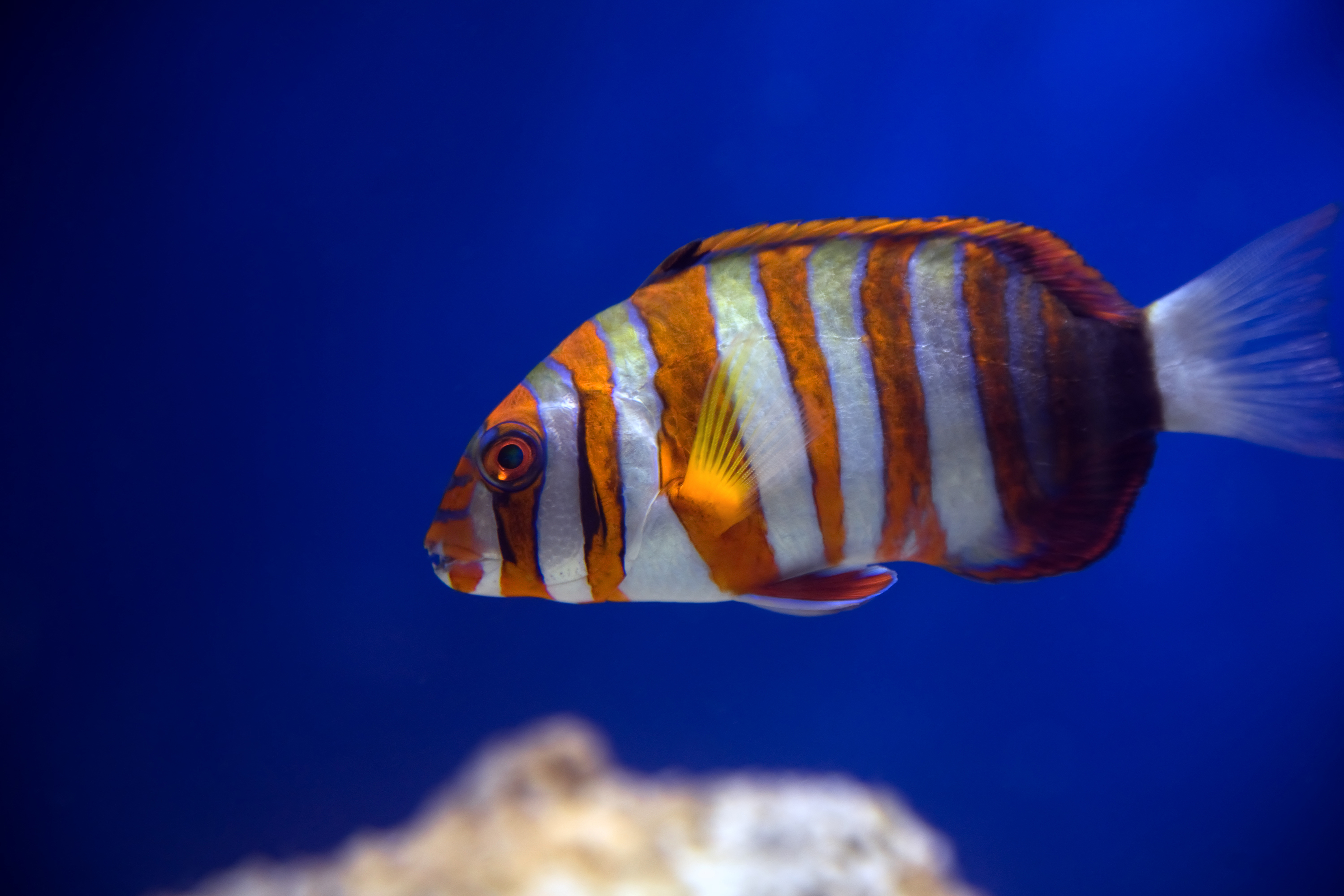
Saltwater Fish-Only
Fish will almost always prefer water with lower nitrate levels over water with higher nitrate levels, but rapid shifts in water parameters will tend to be more stressful to the fish than helpful, even if the rapid shift is in a beneficial direction. This holds double for saltwater fish, which come from an environment that rarely changes, and when changes occur they are over an extended period of time.
Method 1: Water changes
This is the simplest, most straightforward, and most common method of nitrate control in the aquarium. To carry out a water change, simply remove and discard some water from the aquarium, and refill with water that has a lower nitrate concentration. The fish keeper will need to either purchase pre-made saltwater or use a salt mix and RO/DI water to create saltwater for their system.
The effectiveness of water changes is a simple matter of math. If the nitrate concentration is 100 mg/L (ppm) and 30% of the tank water is changed, the new nitrate concentration will be 70 mg/L. If 30% is changed again, the nitrate concentration will be 49 mg/L, a third time and the nitrate concentration will be 34.3 mg/L, and so forth. This means that it is inherently impossible to reduce the nitrate level to 0 through water changes alone unless the fish keeper does a 100% water change (which is never recommended, as it will be extremely stressful to the fish and potentially catastrophic to the beneficial bacteria colonies). It is also dependent on the availability of a low-nitrate water source.
Method 2: Beneficial Bacteria
Methods of removing nitrate through the action of anaerobic denitrifying bacteria colonies in filtration media are fairly universal across aquarium types. For a detailed look at these methods, see Method 2: Beneficial Bacteria in the Freshwater Fish Only section. However, saltwater aquariums often develop large colonies of this type of bacteria by including large volumes of live rock. Fish-Only-With-Live-Rock (FOWLR) tanks tend to have lower levels of nitrate than rock-free aquaria for this reason.
Method 3: Utilization by algae
Pest algae is the plague of aquarists everywhere, but macroalgae in saltwater can be both attractive and beneficial to the system. As the name might suggest, macroalgae is large algae like chaetomorpha or caulerpa which is easy to manage within the aquarium environment. Many commonly-kept fish species will eat macroalgae if left to their own devices, so fishkeepers that intend to use this method of nitrate control are recommended to set up a separate but connected aquarium that is brightly lit to propagate macroalgae. This separate tank not only consumes nitrate, but will also develop large populations of invertebrates that act as a natural food source to the display fish.
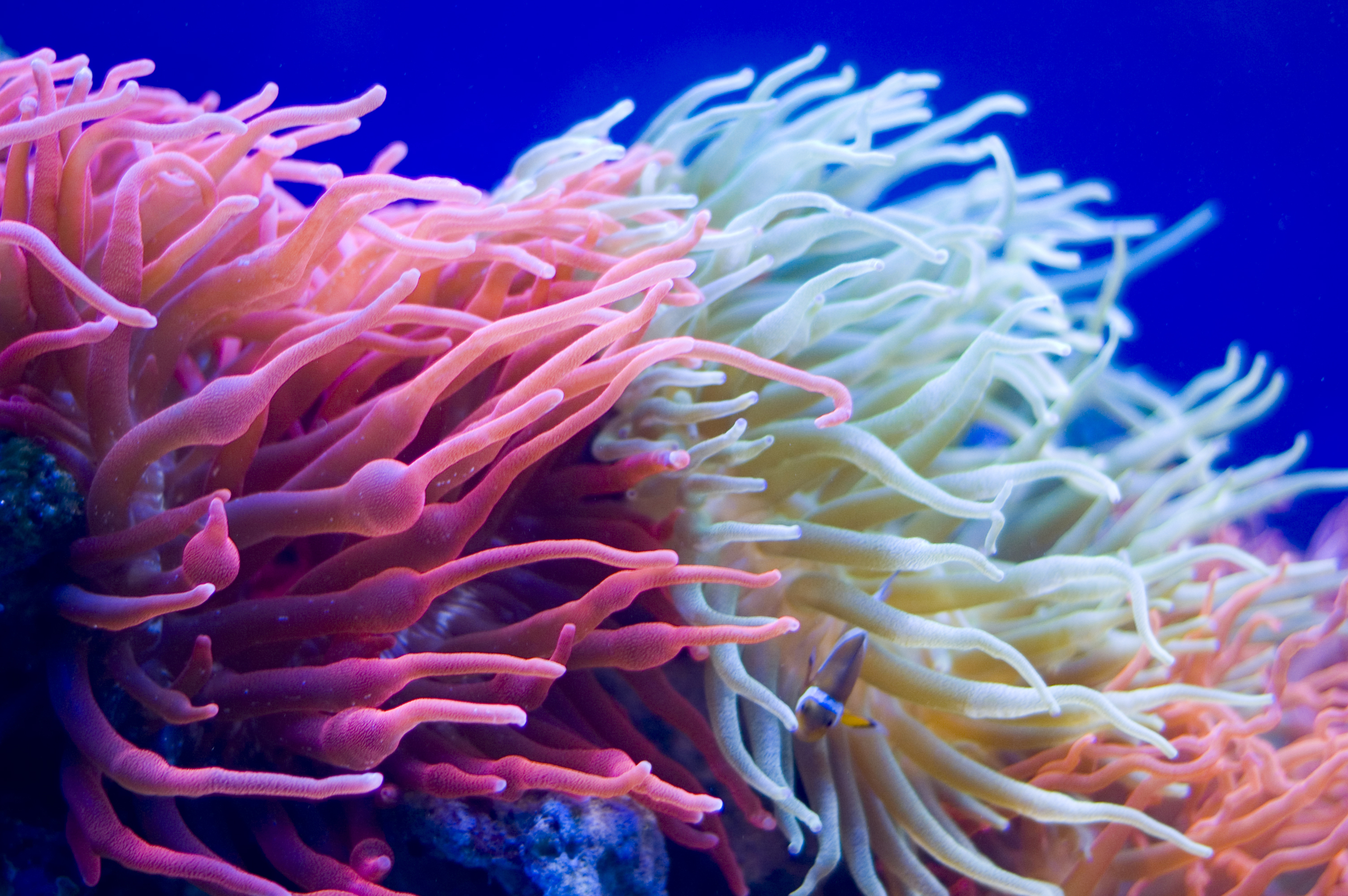
Saltwater with Corals
Both fish and corals in saltwater will almost always prefer water with lower nitrate levels over water with higher nitrate levels, but rapid shifts in water parameters will tend to be more stressful than helpful, even if the rapid shift is in a beneficial direction. The environment of the ocean rarely changes, and when changes occur they are over an extended period of time, which means that these organisms are not adapted to sudden changes.
Method 1: Water changes
As with any other type of aquarium, partial water changes are recommended in reef tanks. This will not only dilute the nitrate (assuming that the fish keeper has opted for a nitrate-free water source), but will also dilute organic acids which lower the pH and replenish essential minerals, buffers, and trace elements that are being utilized by corals to grow. The fish keeper should choose a high-quality salt, a waste-free water source, and should keep water changes to no more than 30% of the tank at a time to avoid stressing the fish and corals.
Method 2: Beneficial Bacteria
Methods of removing nitrate through the action of anaerobic denitrifying bacteria colonies in filtration media are fairly universal across aquarium types. For a detailed look at these methods, see Method 2: Beneficial Bacteria in the Freshwater Fish-Only section. However, saltwater aquariums often develop large colonies of this type of bacteria by including large volumes of live rock. This is a major reason that live rock is so highly recommended as a base for corals in reef aquaria.
Method 3: Utilization by algae
Pest algae is the plague of aquarists everywhere, but macroalgae in saltwater can be both attractive and beneficial to the system. As the name might suggest, macroalgae is large algae like chaetomorpha or caulerpa that is easy to manage within the aquarium environment. Many commonly-kept fish species will eat macroalgae if left to their own devices, so fishkeepers that intend to use this method of nitrate control are recommended to set up a separate but connected aquarium (called a "refugium" that is brightly lit to propagate macroalgae. This separate tank not only consumes nitrate, but will also develop large populations of invertebrates that act as a natural food source to the display fish and corals.
Method 4: Biopellet / Carbon Dosing
A unique solution for nitrate in reef aquaria is the use of a biopellet reactor or carbon supplement (such as vodka). This is essentially a food source to the beneficial bacteria colonies that consume nitrate and phosphate, causing them to grow rapidly and consume waste from the system. This results in lower levels of nitrate and phosphate, increased water clarity, and possibly better coral health. The one caveat to this method of nitrate removal is that it typically requires careful dosing and specialized equipment in the form of a biopellet reactor (for biopellets) and skimmer.
Conclusion
Nitrate is a difficult and ofter frustrating issue that all fish keepers face, but with care and appropriate preparation, it is one that can be dealt with.
Check out our other articles on fish care:
Setting Up the Freshwater Aquarium
An Introduction to Cycling your Tank
Preparing Water for Freshwater Tanks
Caring for the Freshwater Tank
Algae Control in the Planted Aquarium
Balancing the Needs of Fish and Plants
Dealing with Aquarium Clouding
pH in Fish-Only Freshwater Tanks
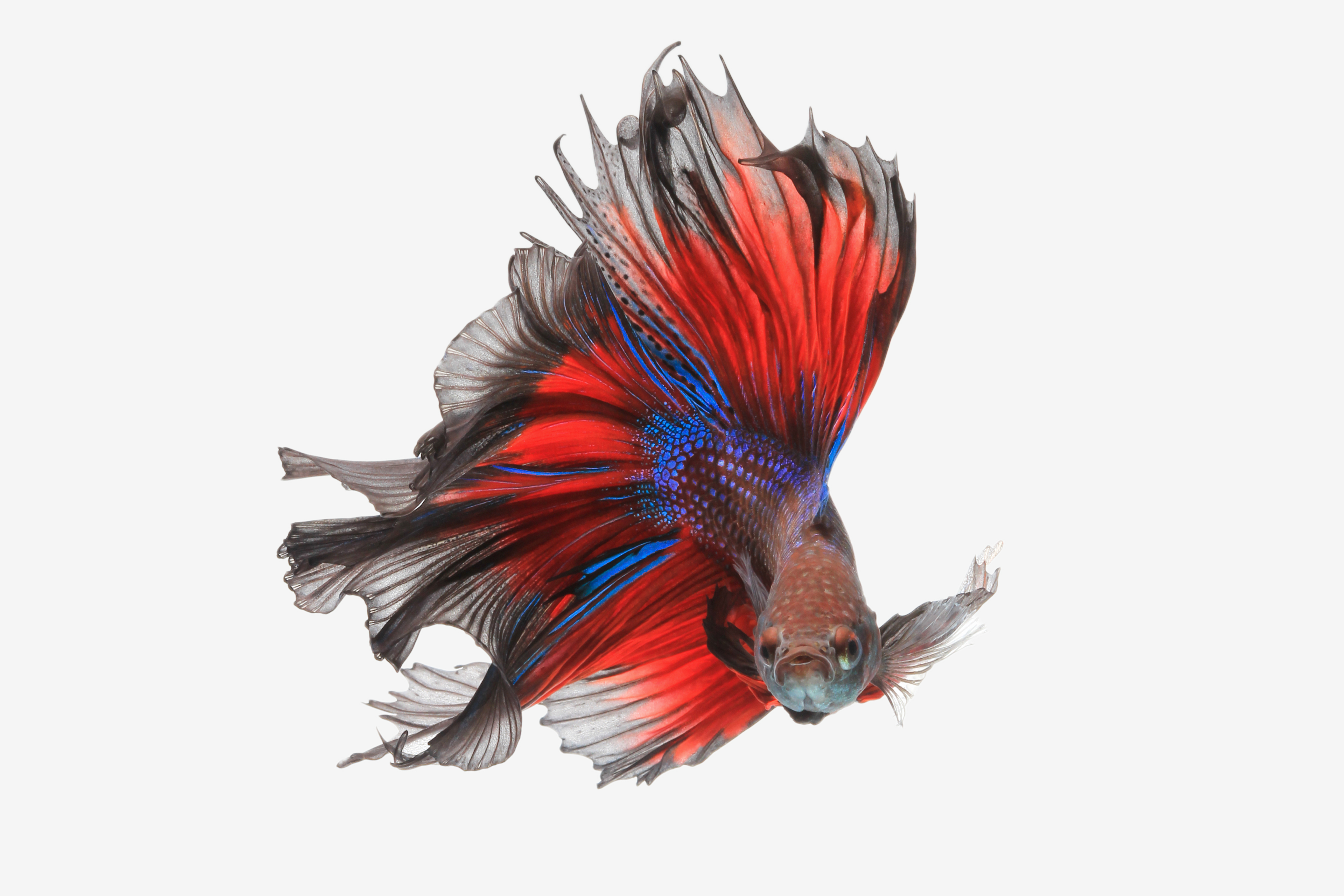
0 Comments